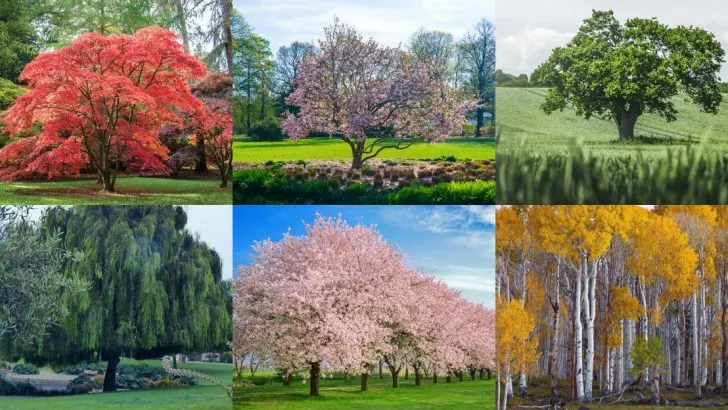Sunburnt patios and boring backyards—your days are numbered. These trees don’t just throw shade. They own the spotlight while doing it. We’re talking sculptural trunks, leafy drama, and silhouettes that demand attention at golden hour. Some grow fast, some grow grand, but all of them bring attitude. Forget the flat look of plain grass and fence lines. One well-placed tree can shift the entire vibe—from “meh” to magazine cover. Want a canopy that cools like a whisper on a hot day? Or maybe something that turns fire-orange in fall and makes the neighbors jealous? You’ve come to the right list. These 15 trees aren’t just shade-givers. They’re style statements. Green giants. Living architecture. And your yard is ready for them.
Japanese Maple

The Japanese Maple, with its elegant leaves, brings a touch of serenity to any garden. Its vibrant red foliage in autumn is a sight to behold. Each leaf dances in the breeze, creating a living tapestry of color.
This tree thrives in partial shade, making it perfect for creating a cozy nook in your yard. It’s a slow grower, but worth the wait as it matures into a graceful silhouette.
Plant it near a patio or pathway to appreciate its beauty up close. Did you know? This tree is also a symbol of grace and peace.
Magnolia
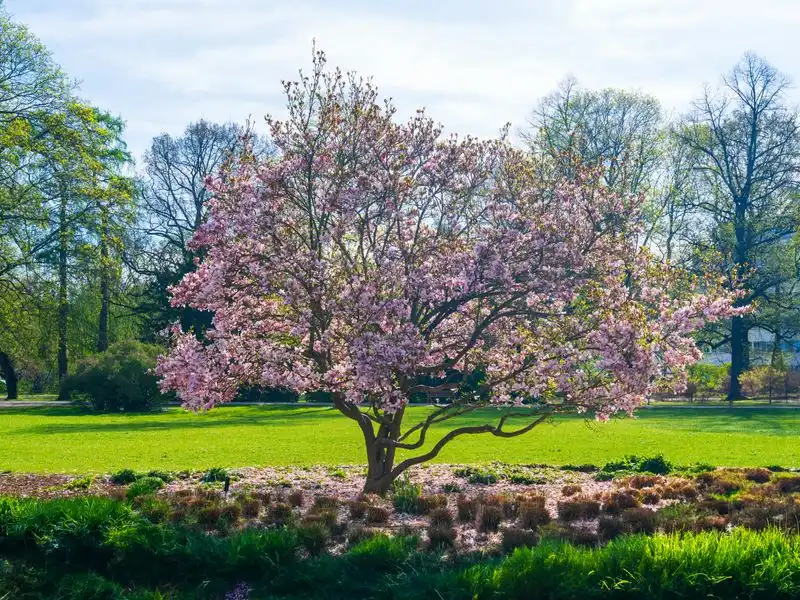
Magnolias are the stars of springtime gardens. Their large, fragrant blooms herald the arrival of warmer days. Each flower opens like a porcelain cup, inviting admiration with its beauty.
These trees can be deciduous or evergreen, offering options for different climates. Their broad leaves provide ample shade, making them a favorite for lounging underneath.
Plant a Magnolia where it can be the focal point of your garden. Fun fact: Magnolias have existed on Earth for over 95 million years, making them ancient wonders of the botanical world.
Oak Tree
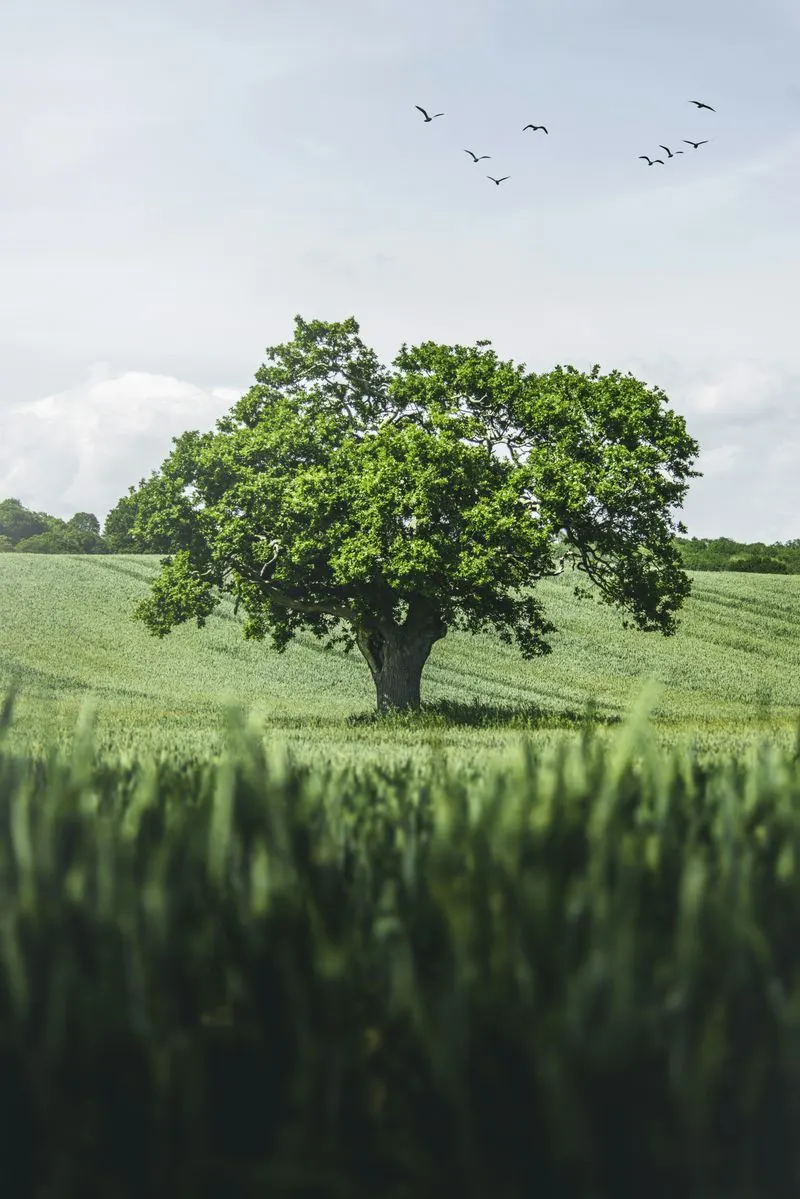
Oak trees are the epitome of strength and longevity. Their sprawling branches create a haven of shade beneath their canopy. People often find solace under its protective cover.
These trees are slow to grow but are incredibly resilient, making them a long-term investment for your landscape. The sight of an Oak can evoke nostalgia and comfort.
With acorns dotting the ground, they also support local wildlife. A historical note: Oaks were revered by Druids as sacred trees, symbolizing wisdom and strength.
Weeping Willow
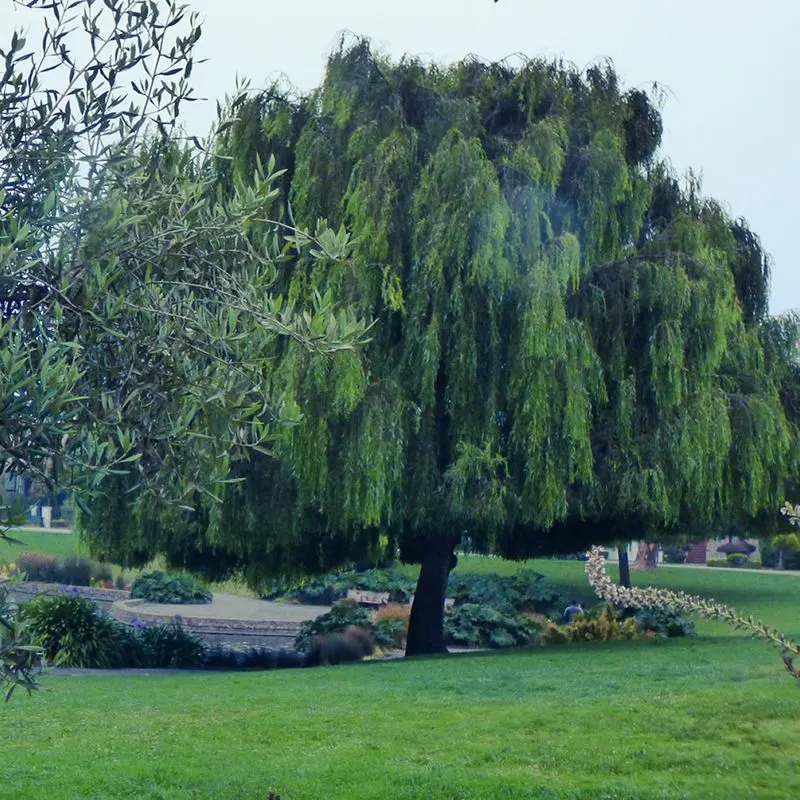
The Weeping Willow’s graceful form is like nature’s own sculpture. Its drooping branches create a curtain of green, offering privacy and shade.
Often found near water, it thrives with its roots in moist soil, perfect for pond-side planting. Its leaves rustle softly in the wind, adding a melodic whisper to your garden’s symphony.
This tree is a symbol of renewal and resilience. Fun fact: The Weeping Willow can grow up to 10 feet in a single year when conditions are favorable.
Cherry Blossom
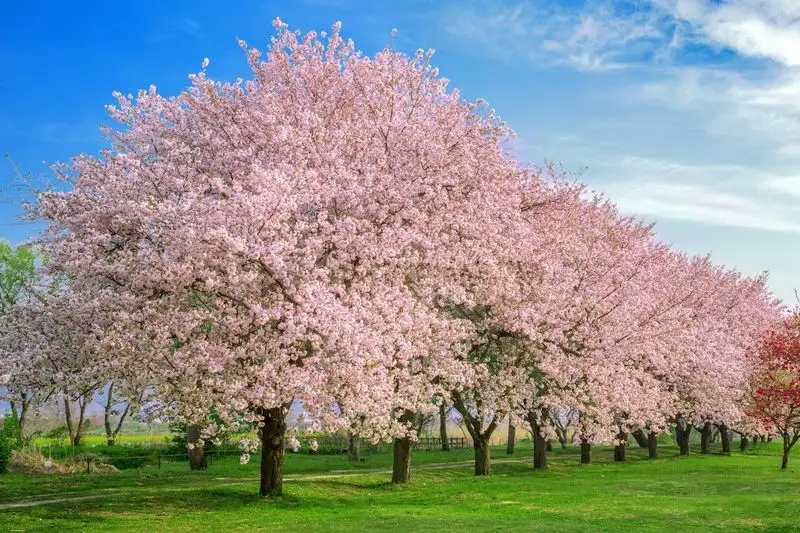
Cherry Blossoms are synonymous with beauty and transience. Their fleeting blooms are a celebration of spring’s arrival. Each petal is like a blush on the cheek of nature.
These trees are perfect for adding a touch of elegance to your landscape. As the flowers fall, they create a magical carpet of pink.
Plant them in a prominent spot to enjoy their short-lived but stunning display. Did you know? In Japan, Cherry Blossom festivals celebrate the beauty of these blossoms with picnics under their blooms.
Birch Tree
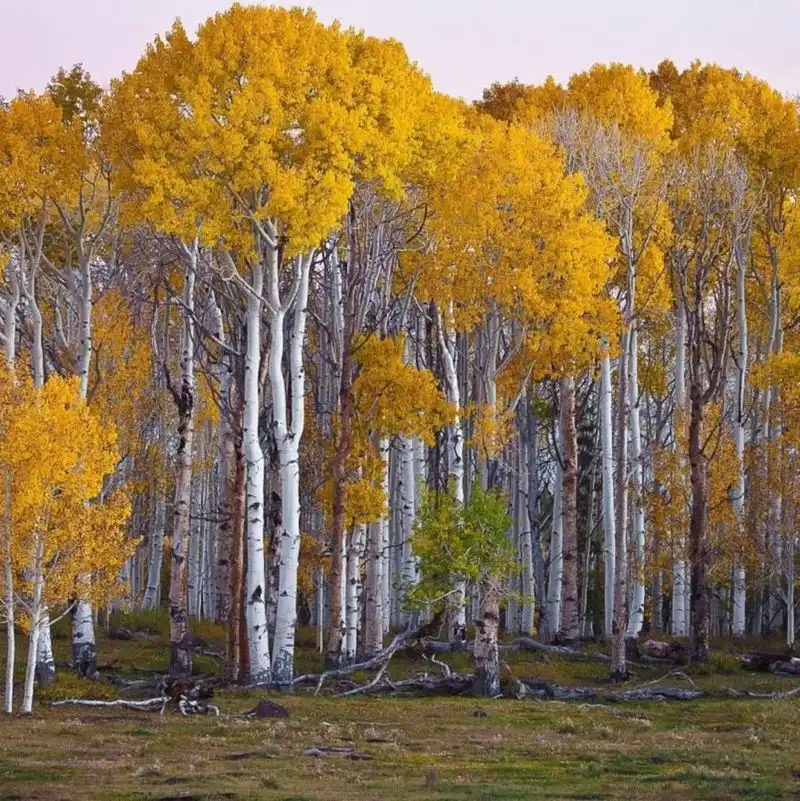
Birch trees are known for their striking white bark and delicate leaves. Their beauty is understated yet captivating. In autumn, their foliage turns a brilliant yellow, adding warmth to the season.
These trees are fast-growing and can thrive in various conditions, making them versatile additions to any landscape. Their bark peels in thin, papery layers, adding texture.
Often planted in groups, Birches can form a lovely natural screen. Historical tidbit: Birch bark was used for writing in ancient cultures due to its smooth surface.
Maple Tree

Maple trees are renowned for their stunning autumn display, painting landscapes in hues of orange and red. Their leaves are like nature’s own confetti.
These trees provide excellent shade in summer, making them ideal for picnic spots. The rustling sound of their leaves in the wind is both soothing and nostalgic.
Maples are also tapped for their sap, which becomes delicious maple syrup—a sweet gift of nature. Did you know? Some Maple species are so colorful they appear to be on fire during peak fall season.
Dogwood
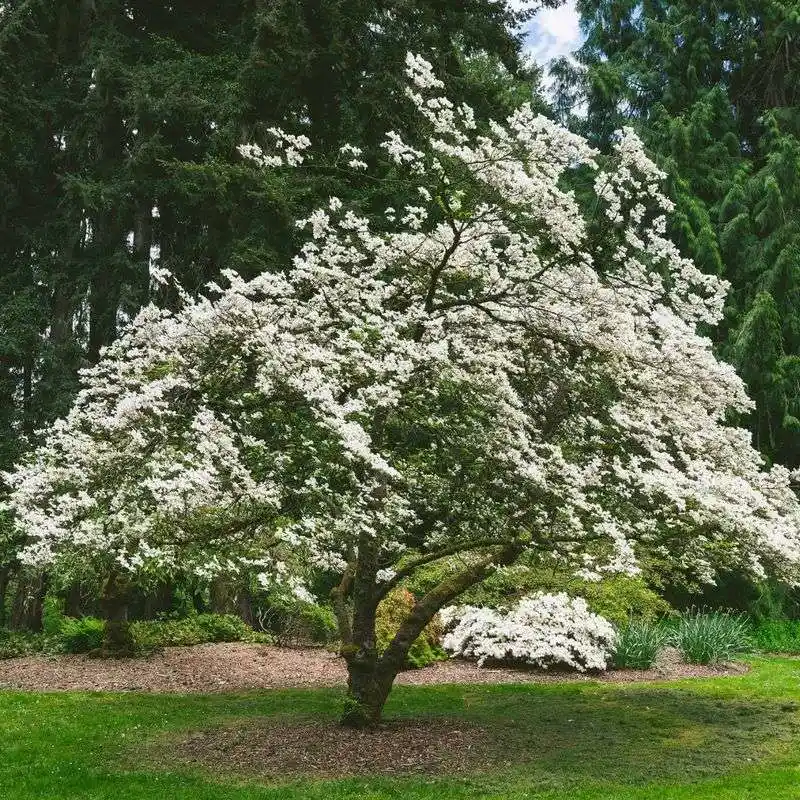
Dogwoods are cherished for their beautiful bracts, often mistaken for petals. Their springtime display is like a gentle nod from nature. Each bract surrounds tiny, clustered flowers, creating a unique visual.
These trees adapt well to various soils, making them easy to grow. Their fall foliage adds another layer of color to the landscape.
Plant a Dogwood in a sunny spot for best blooms. An interesting fact: Dogwood wood is incredibly dense, historically used for weaving tools and skewers.
Ginkgo Biloba
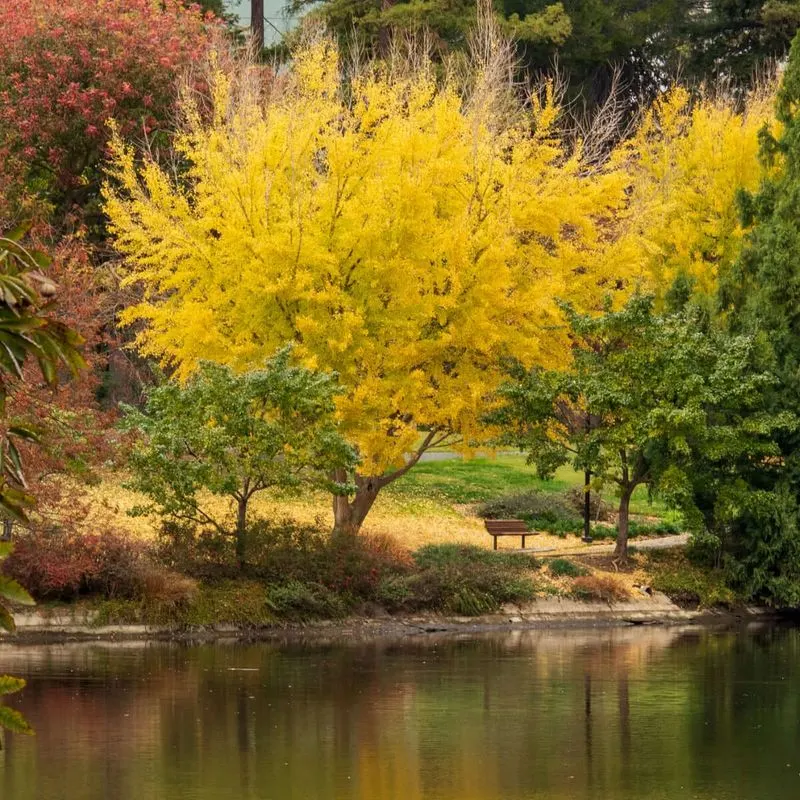
Ginkgo Biloba, often called the ‘maidenhair tree,’ is a living fossil, unchanged for millions of years. Its fan-shaped leaves turn a brilliant yellow in autumn, creating a golden sea.
These trees are incredibly resilient, resistant to pollution and pests. They’re perfect for urban landscapes, adding grace and a touch of history.
Ginkgos are male and female, but only males are typically planted due to the scent of the fruit. Did you know? The Ginkgo is considered a symbol of resilience, having survived the atomic bomb in Hiroshima.
Crape Myrtle
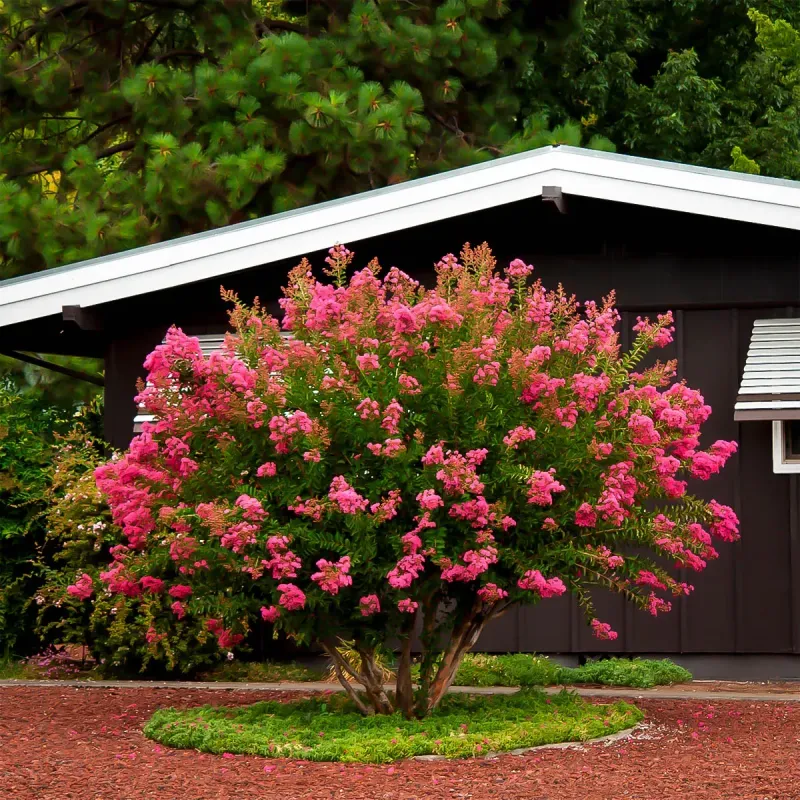
Crape Myrtles are summer’s fireworks. Their vibrant blooms in shades of pink, purple, and red are a visual feast. Each cluster of flowers is like a burst of joy on a warm day.
These trees are drought-tolerant and thrive in sunny spots, making them ideal for hot climates. Their bark is smooth and mottled, adding year-round interest.
Prune them in winter to encourage a bounty of summer blooms. Fun fact: In the Southern U.S., Crape Myrtles are often referred to as ‘Lilacs of the South.’
Redbud Tree

Redbuds are the harbingers of spring, with their pink blossoms adorning bare branches. Each bloom is a promise of warmth and renewal. These trees create a striking contrast against a clear blue sky.
Redbuds are compact, making them suitable for small gardens or urban settings. They bloom before the leaves appear, ensuring their beauty is undistracted.
Their heart-shaped leaves add charm as the season progresses. Did you know? The Eastern Redbud is the state tree of Oklahoma, celebrated for its vibrant springtime show.
Linden Tree
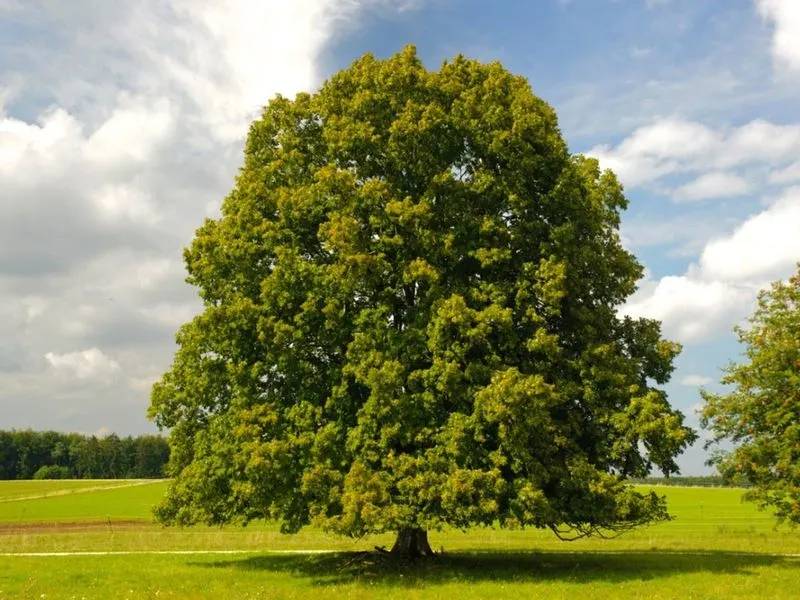
Linden trees, often called ‘lime trees’ in Europe, are known for their sweet-smelling flowers and dense shade. Their heart-shaped leaves and hanging clusters of flowers create an enchanting scene.
These trees are perfect for parks and large gardens, providing a cool retreat from the summer sun. Their flowers attract bees, essential for pollination.
The wood is soft and easily carved, used historically for shields and sculptures. Fun fact: In mythology, Linden trees were symbols of love and peace, often planted in village centers.
Catalpa
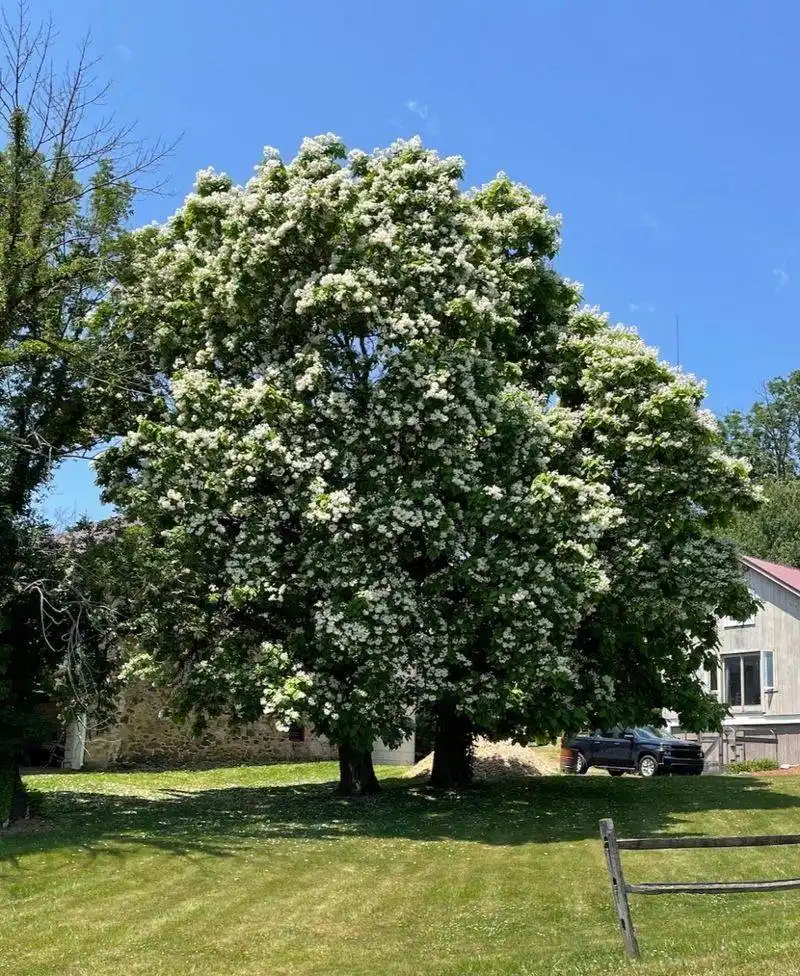
Catalpa trees are known for their large, heart-shaped leaves and showy white flowers. Each leaf is like a green heart, offering shade and shelter. Their flowers form in clusters, adding a touch of whimsy to the garden.
These trees are fast-growing and thrive in a variety of soils, making them adaptable landscape additions. Their long, bean-like seed pods bring an exotic flair.
Plant a Catalpa for a touch of the tropics in your own backyard. Did you know? Catalpas are sometimes called ‘cigar trees’ due to their distinctive seed pods.
American Elm
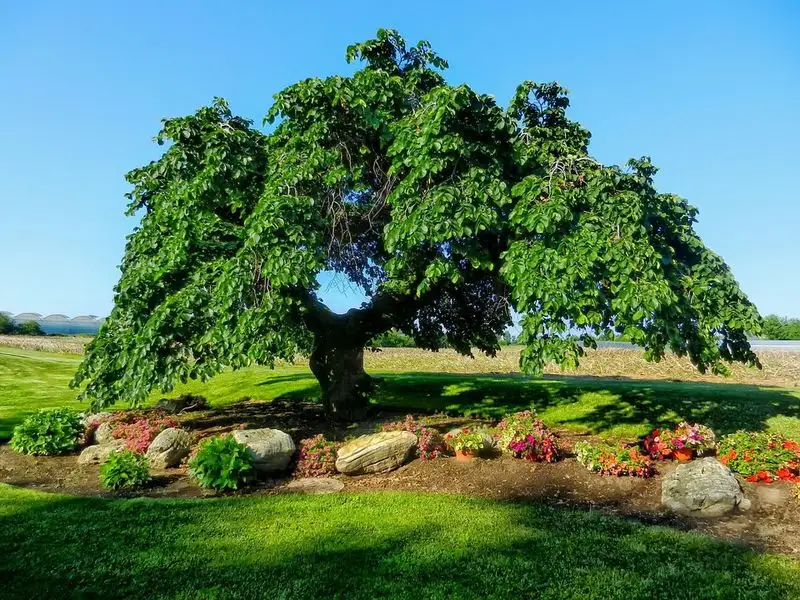
The American Elm, with its iconic vase shape, once lined many streets and parks. Its wide canopy provides abundant shade, a perfect spot for summer picnics.
These trees are resilient and can grow in a variety of conditions. Although once devastated by Dutch Elm Disease, resistant strains are making a comeback.
Elms symbolize strength and elegance in the American landscape. Did you know? The American Elm was a favorite of early settlers, who appreciated its fast growth and shade.
Silver Maple
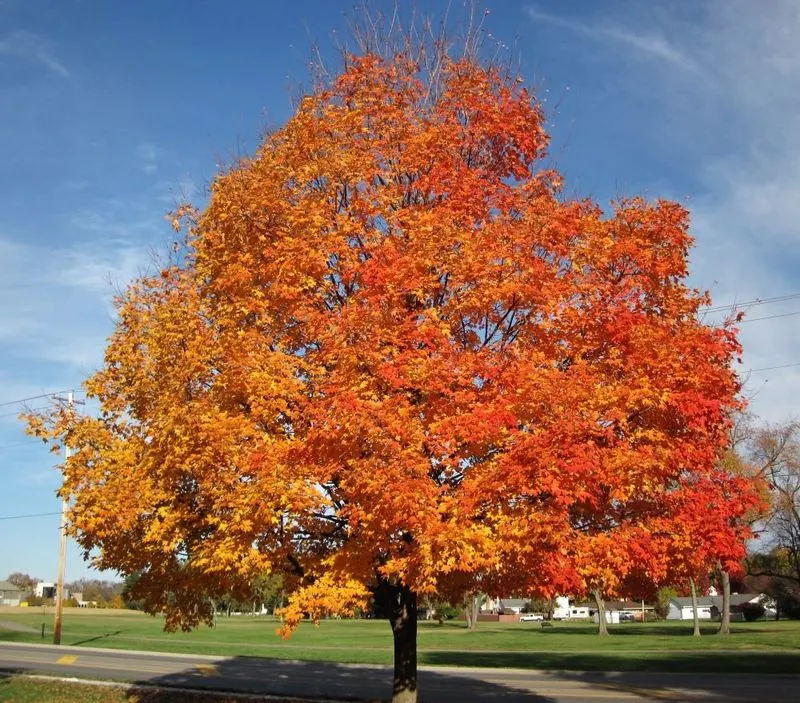
Silver Maples are known for their fast growth and shimmering foliage. Their leaves have a silvery underside, catching the light with every breeze. These trees are perfect for adding a touch of magic to riversides.
They provide excellent shade with their wide-spreading branches. However, they need space to grow, as their roots can be invasive.
Silver Maples thrive in wet conditions, making them ideal for areas prone to flooding. Fun fact: The Silver Maple’s leaves are often brighter than those of other Maples, adding sparkle to any landscape.

